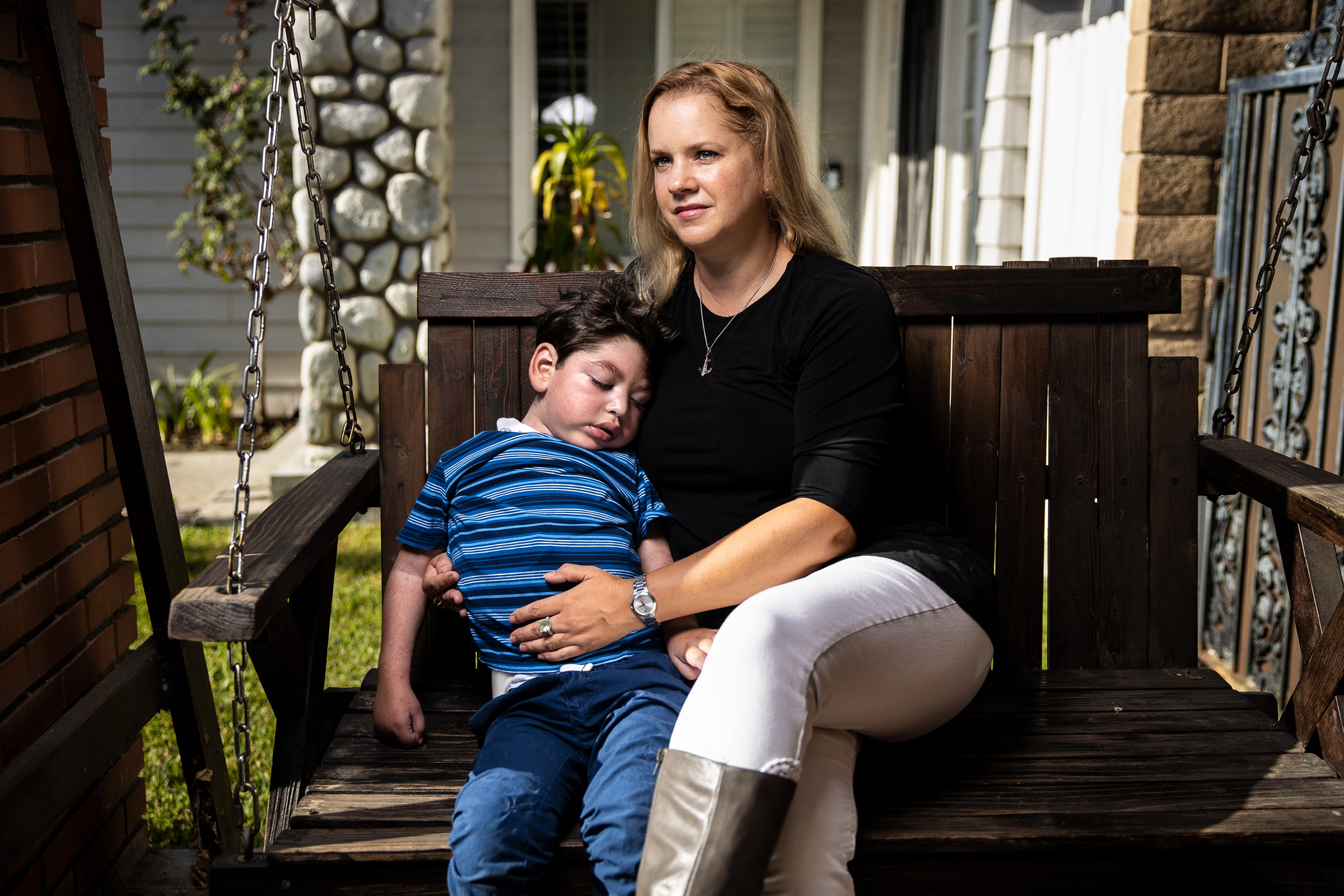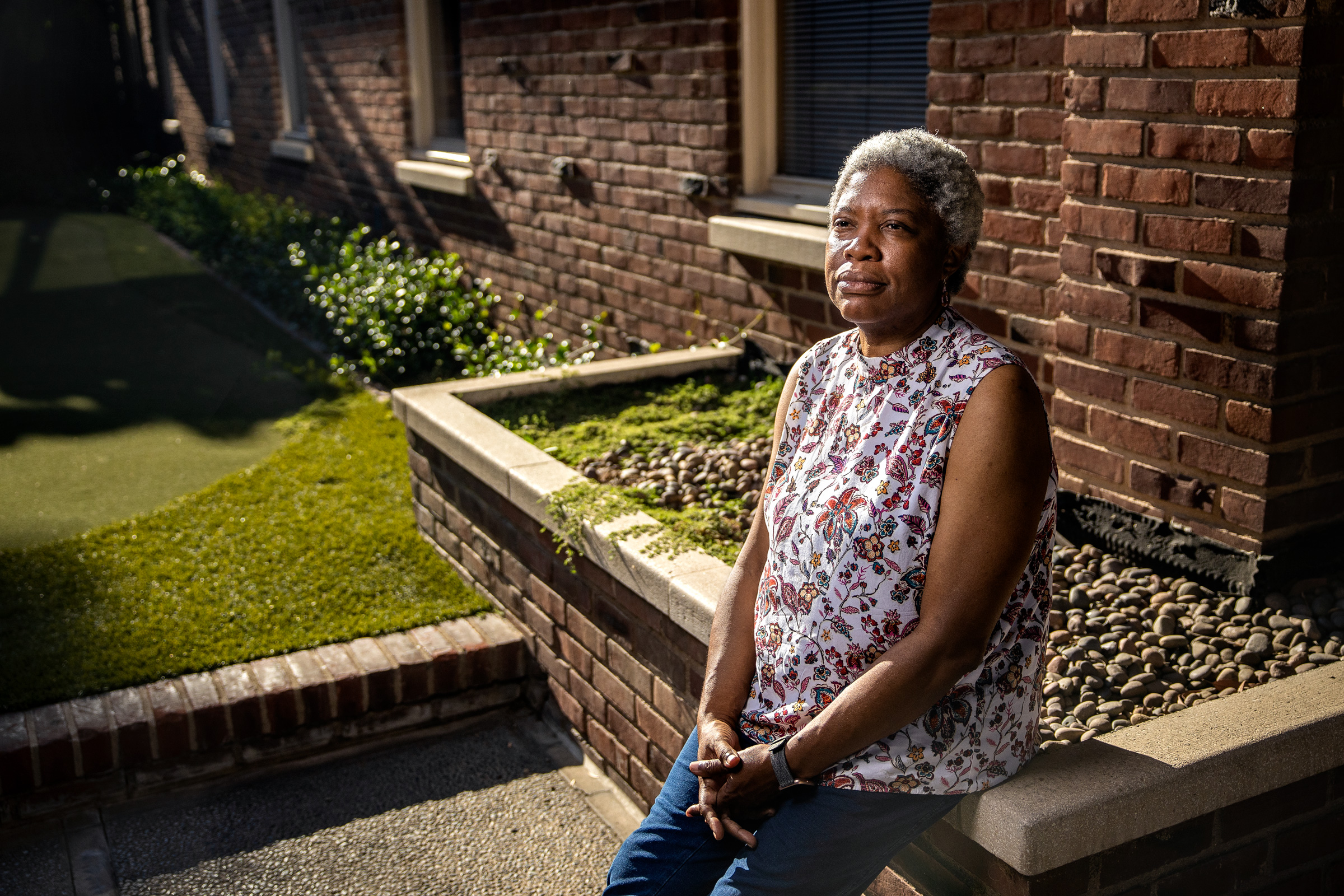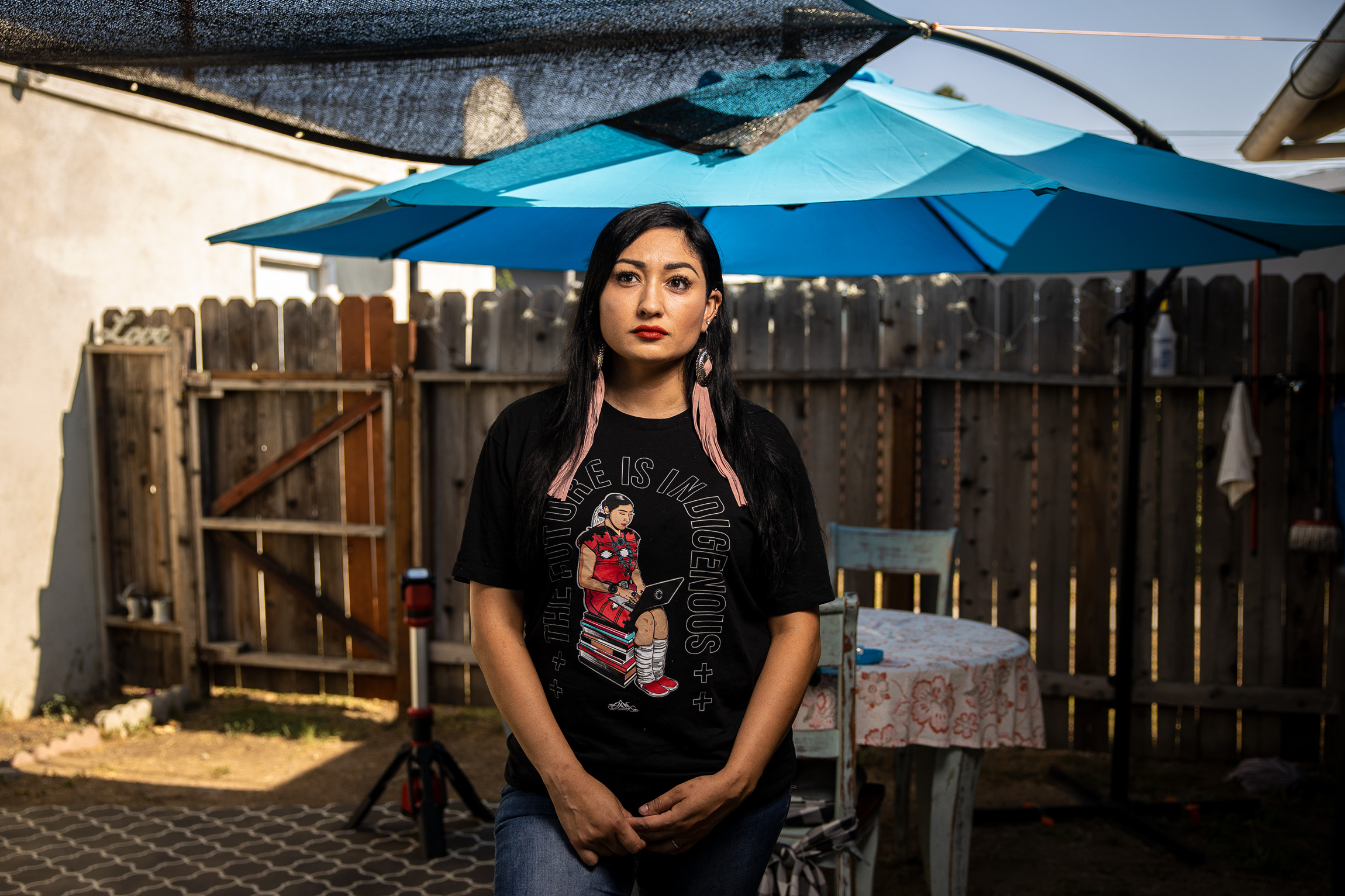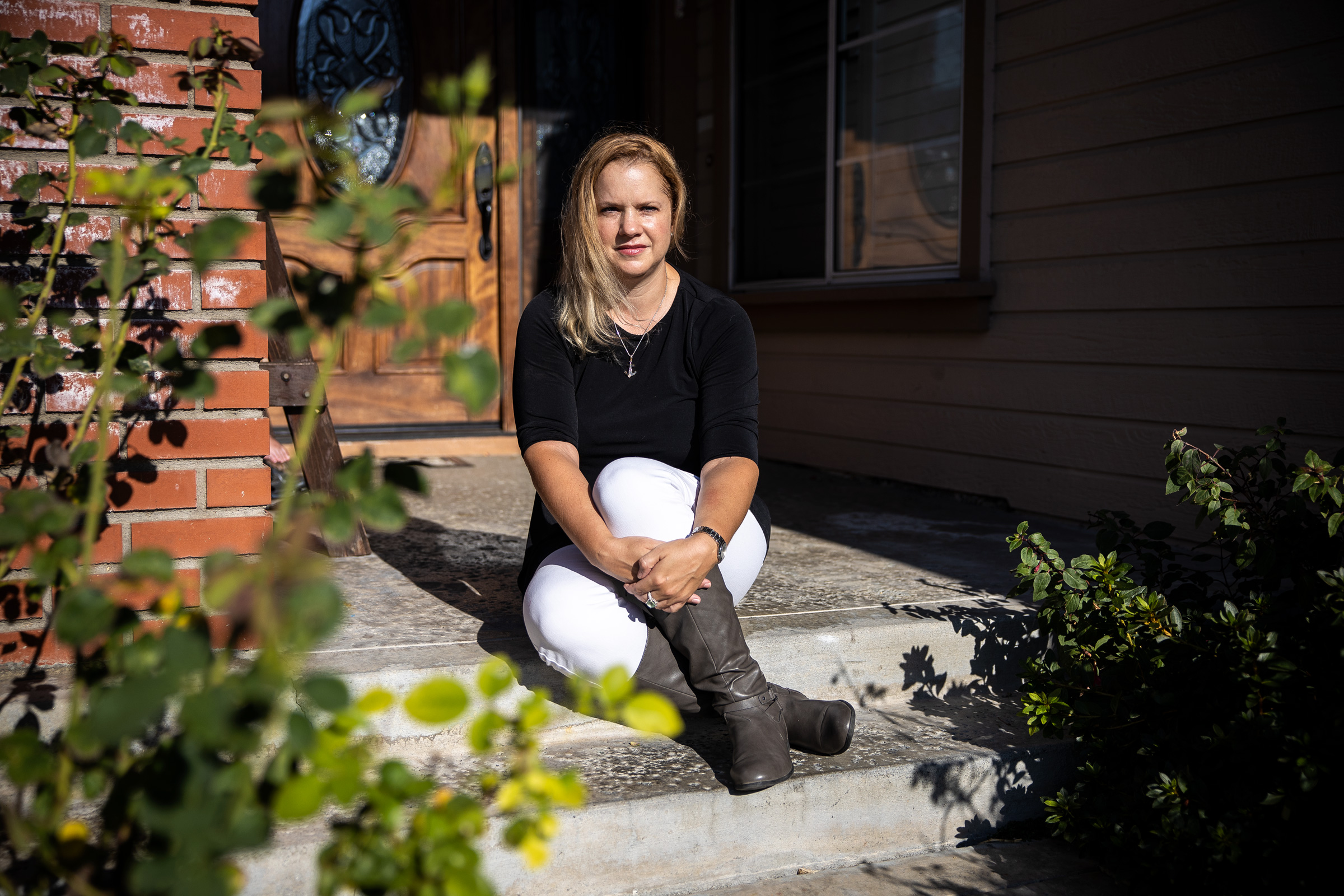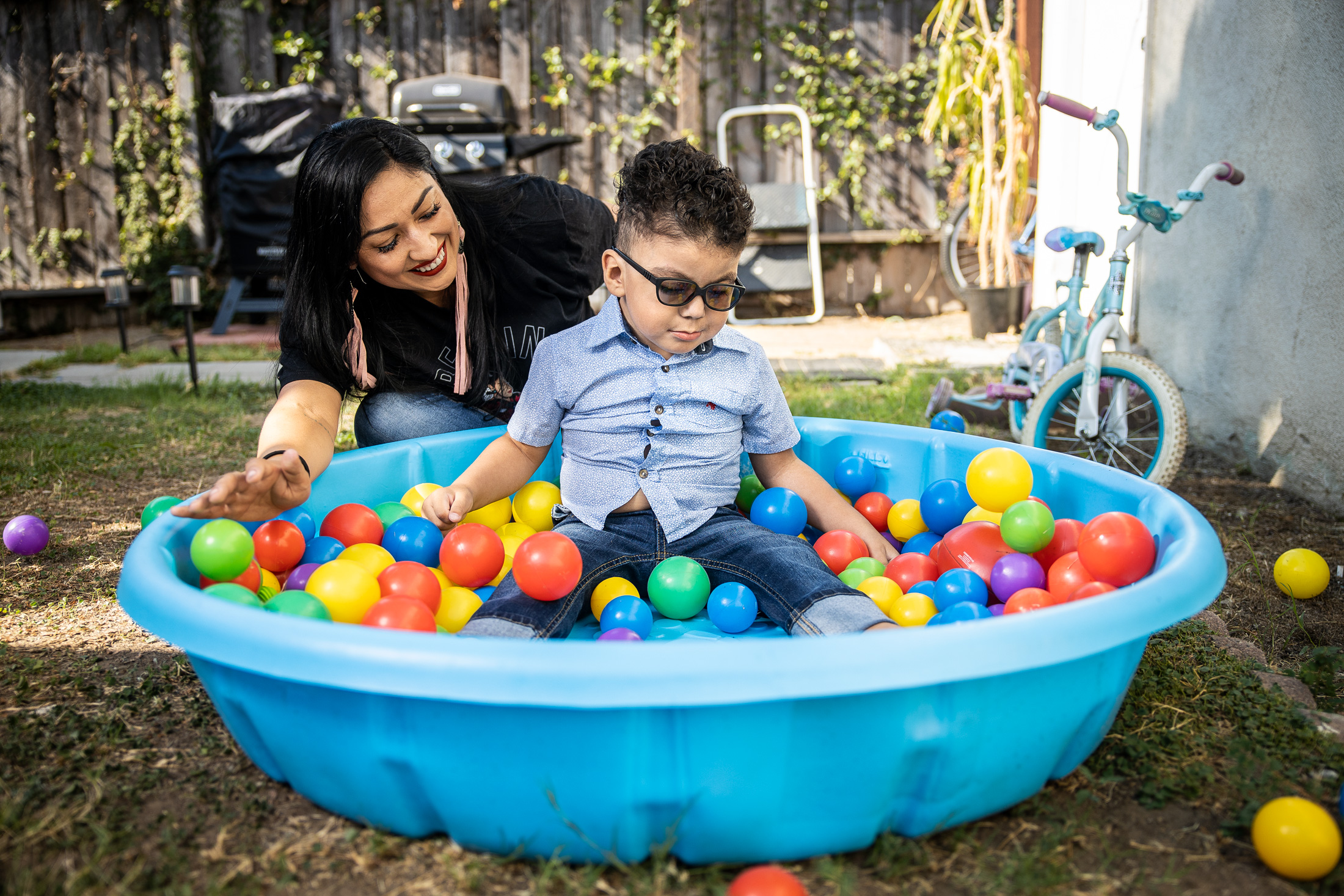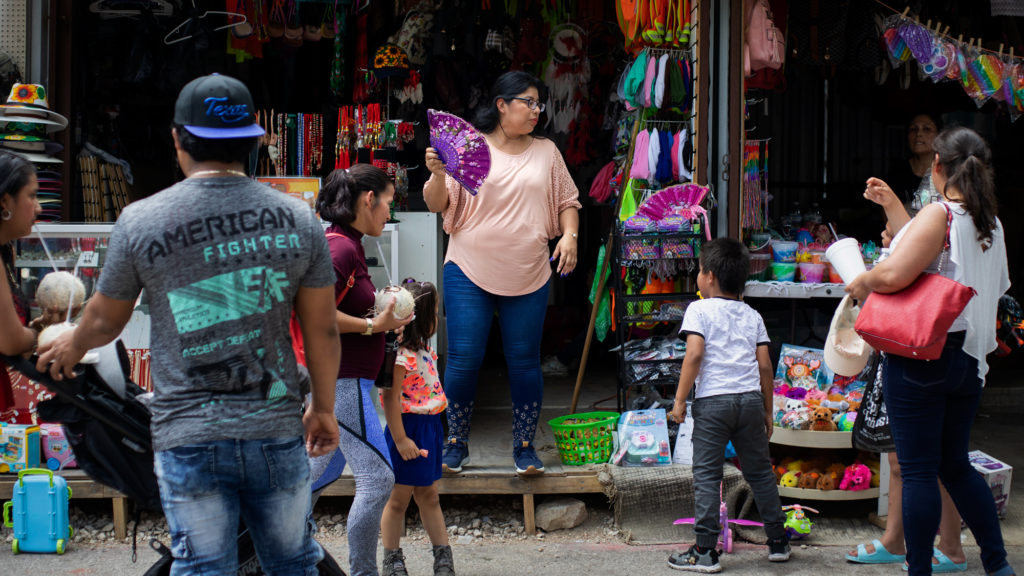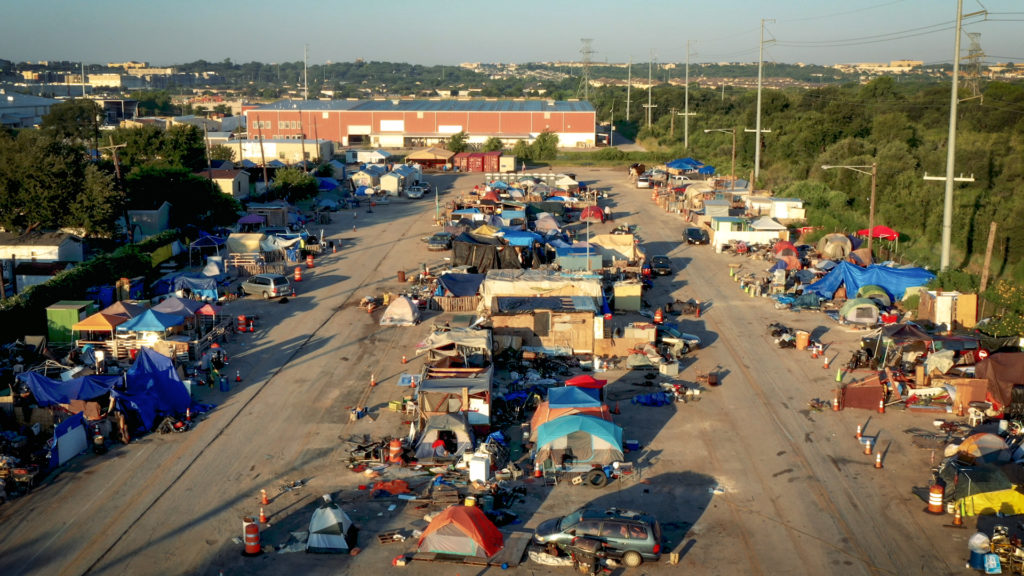Gavin Alcala has a rare genetic disorder that causes partial blindness, epilepsy, and developmental delays that prevent him from walking and talking. Before he turned three, the toddler attended a special daycare and received therapy through the Eastern Los Angeles Regional Center.
On the day he was set to start preschool — March 13 — the L.A. Unified School District suspended in-person classes in response to the pandemic. But at this point, under California’s special education policies, responsibility for serving children like Gavin falls to local school districts once they become eligible for preschool.
“We kind of got stuck in limbo,” said Gavin’s mother, Melissa Alcala. “No one knew who was supposed to service us.”
Before turning 3, Gavin received occupational therapy, physical therapy, vision therapy, and speech therapy, all paid for by the Eastern L.A. Regional Center. Those therapies were supposed to continue through the Albion Street Elementary’s special learners program. Gavin also received feeding therapy through a private insurance plan, but the provider wasn’t equipped to move the sessions online once the pandemic hit.
“Now,” Alcala said, “it’s all stopped.”
Alcala is one of many parents of young children with special needs in Los Angeles County who have struggled to find services for their kids during the pandemic. Like Gavin, some of these children have lost multiple supports, such as occupational, physical, and speech therapies since schools closed six months ago.. Since mid-March, California’s complex special needs care system has struggled to move children from one program to another, parents and advocates said.
For other families, the challenges are more technical. Some families lack computers or reliable internet to access therapy and educational support via telehealth. Some parents who don’t speak English have a hard time navigating access to care. In other cases, providers have closed programs altogether, or their transition to online services has been slow, or they have scaled back the programs they offer, leaving children and families with a stripped-down version of the support they received before the pandemic.
Parents ‘Don’t Know What to Do Next’
Even when families can find therapy and developmental help for their children online, some have found the process ineffective or difficult to manage, and have dropped the supports altogether, said Yvette Baptiste, executive director of the Eastern L.A. Family Resource Center, which helps families of children with disabilities connect with resources in the area.
Yvette Baptiste, executive director of the Eastern LA Family Resource Center outside their offices in Alhambra, California. [Photo by Martin do Nascimento]
“A lot of the services have moved to telehealth, and there’s an issue with access and understanding,” said Baptiste. “Some of the parents have just said, ‘No, that’s all right, I don’t want to do that,’ and that means that their child isn’t improving in their development.” These challenges accessing and using telehealth, she added, are likely to disproportionately impact low-income families of color due to longstanding income and racial inequities.
The danger, say advocates for children with special needs, is that children are missing out on key interventions at a critical moment in their lives. For all children, the period between birth and five years of age is a time of rapid physical and neurological development that lays the foundation for future well-being. For children with special needs and other health conditions, intervening early with socialization programs and occupational, speech, behavioral, and vision therapy can dramatically improve their ability to navigate life’s challenges.
“The science and the research shows what the long-term impact looks like for children who are already at a disadvantage in their development and not receiving resources,” said Crystal Smith, program manager at the McClaney Family Resource Center, which is tied to the South Central Los Angeles Regional Center. “It impacts school readiness and success in being able to reach and perform to their best ability in an educational setting. It prolongs the developmental delays, and creates additional stress for the child’s family.”
For Gavin, losing therapeutic support has caused him to regress in many of his hard-won developmental gains. He no longer recognizes his favorite song from daycare about bumblebees. Before the pandemic, he’d been making progress learning to taste and swallow food with his feeding therapist. Now he’s having difficulty swallowing and has reverted to using a feeding tube, his mother said. He’s also begun showing aggressive behaviors, such as slapping and pulling people’s hair, which Alcala thinks might be a sign he needs more sensory stimulation.
Melissa Alcala, a member of the Navajo Nation, in her back yard in Eastern Los Angeles. “We kind of got stuck in limbo,” said Alcala. “No one knew who was supposed to service us.” [Photo by Martin do Nascimento]
“It’s frustrating,” she said. “I need a professional to guide me, to say, ‘Okay, this is what you should do, this is what you should try,’ and that’s not what we’re getting right now. I’m Googling. I’m constantly contacting other parents and saying, ‘Hey, what about this?’ It’s kind of hard to not know what to do next.”
An Excuse Not to Serve Kids?
Carrie Lustig of Huntington Beach worries her son will also regress. Coby, age five, survived a stroke as a baby and has cerebral palsy, epilepsy, and a visual impairment. Until two months ago, he received physical, occupational, speech, and vision therapies online through a private school for children who are blind.
But that school shut down in July for reasons unrelated to the pandemic. When Lustig tried to get the same therapies through the public school system (the West County Consortium for Special Education), she was told that it wouldn’t be possible until in-person classes resumed in the fall. Now that the school year has started, Coby’s no closer to accessing therapy as the district is still working to coordinate the support he requires.
Both Lustig and Alcala said they suspect the pandemic has become an excuse not to provide their children with needed services.
“Parents of kids with special needs, we’re very frustrated right now,” said Lustig. “We’re usually a frustrated community as it is because of accommodations and school districts, and everybody tries to fight us. … Now, it’s just taken on a whole new level.”
Carrie Lustig sits on the stoop in front of her home in Huntington Beach, California. [Photo by Martin do Nascimento]
Barbara Jones, a spokesperson for the L.A. Unified School District, said the district is still finalizing special education plans for the coming school year. In a statement to the school board in May, Superintendent Austin Beutner acknowledged the difficulty of transitioning students with special needs to online learning when they typically require intensive, hands-on support. Nevertheless, he said educators were working hard to create individualized education programs for online instruction for the almost 70,000 students in the district with learning differences and disabilities, especially those entering kindergarten.
“Everyone involved recognizes there’s no substitute for a classroom setting, but they are trying their best because every student deserves the best possible education, irrespective of circumstance,” he said.
Meanwhile, other service providers and organizations that support young children with special needs said they’re doing what they can to adapt. The Braille Institute’s Los Angeles Center has a child development program that typically sends specialists to work one-on-one with children who are blind and visually impaired in their homes. During the pandemic, the institute has switched to online sessions and created a series of activity printouts and videos showing parents how to work with children on their own, said Karen Nutt, director of child development services.
The McClaney Family Resource Center put together learning kits for families with young children with special needs who weren’t able to continue receiving services through telehealth, said Smith. The kits include a bilingual book, toy cars, a stuffed animal, paint, and paint brushes. Staff members delivered the kits, along with other basic-needs supplies, such as laundry detergent to families hit hard by the pandemic, she said.
‘Saturated With Zoom Meetings’
But even for those who can access online therapy with practitioners who’ve transitioned well online, engaging families remains a challenge. The Eastern L.A. Family Resource Center has moved its parent support groups online but turnout has dropped compared to in-person groups, Baptiste said. Nutt said some of the families receiving support from the Braille Institute have turned down the online sessions.
“Sometimes parents get a little saturated with Zoom meetings,” she said. “Because not only are we doing the Zoom meetings, but so is the occupational therapist, the physical therapist, the infant development specialist. It gets a little tedious sometimes, and I can understand why a parent would just say, ‘You know what? I need a break.’”
Suzanne Galindo, project manager at Team of Advocates for Special Kids (TASK), said school districts are still required to follow individualized special education programs for students. The pandemic has created an unprecedented situation, but districts are complying with state guidance to provide virtual instruction until schools open, she said.
Melissa Alcala and her three-year-old son Gavin play in the ball pit behind their home in Eastern Los Angeles. [Photo by Martin do Nascimento]
Melissa Alcala is hopeful Gavin will be able to start preschool this fall, but she’s still waiting to receive details from the school district. She recently learned the teacher Gavin was supposed to have got laid off. In the meantime, she’s managed to get the regional center to pay for one hour of instruction each week with his former daycare until Gavin starts preschool.
Alcala, a member of the Navajo Nation, also worries about other families in her largely Latinx neighborhood who have children with disabilities. Unlike her, many don’t speak English or know how the system for children with special needs works, she said. Some of them call her in tears asking for advice.
“I can’t help but feel there’s such a disparity right now. Our kids are the last to be checked on,” Alcala said. “Even before the pandemic, they were struggling to get services, and now with the pandemic, it’s even harder.”
This story was originally published by the California Health Report and Disability Scoop.

